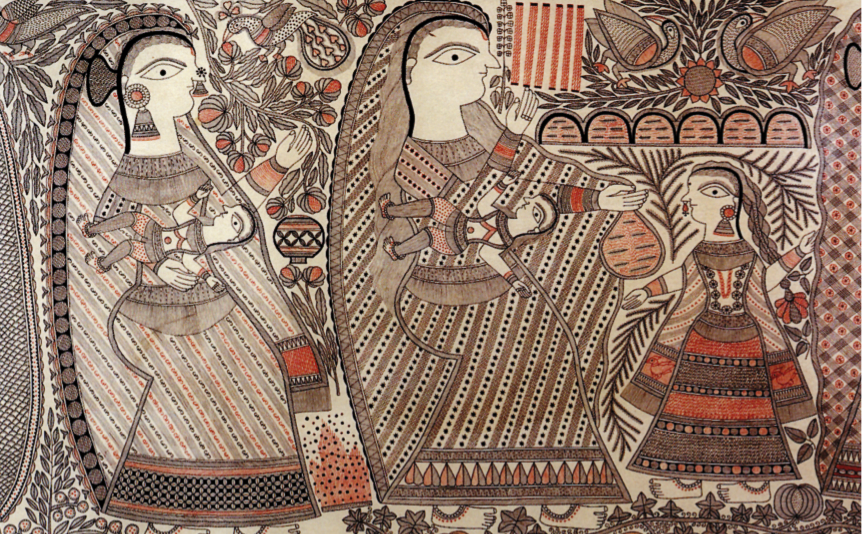
A Madhubani drawing of the mother or mother-in-law paying the small dai (small perhaps indicating her social status) with the mother and baby behind.
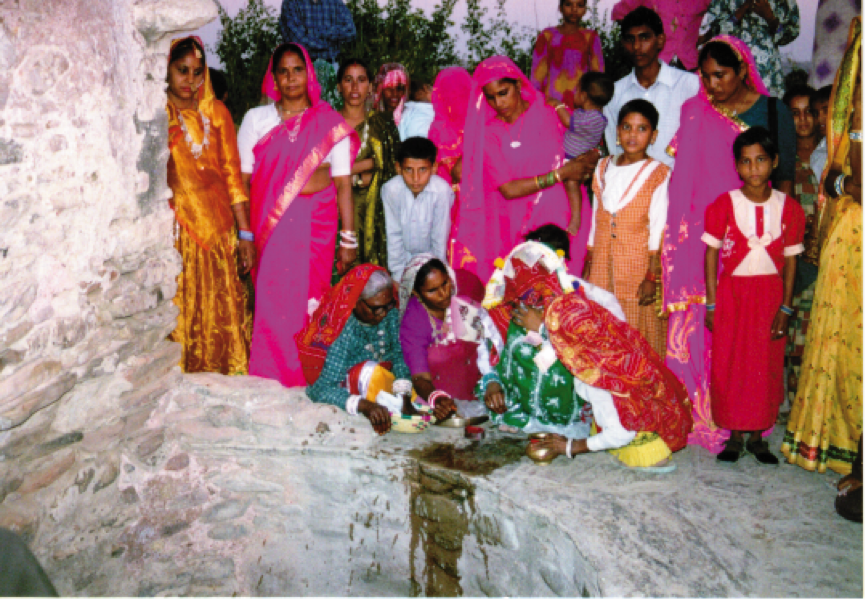
A traditional worship of the well, or water source, was common in many parts of North India. This photo was taken in rural Rajasthan where offering is made to the community well. In slums in Delhi the rite was changed to invoke blessings of the hand pump where women drew water. Here we can see an analogy between two kinds of water that sustain. The water of the well/hand pump and the womb water that holds the baby—one supports the family through drinking, the other continues the family line. Most importantly this is not a purification rite, cleansing the woman, rather it is respect given to the earth and the womb
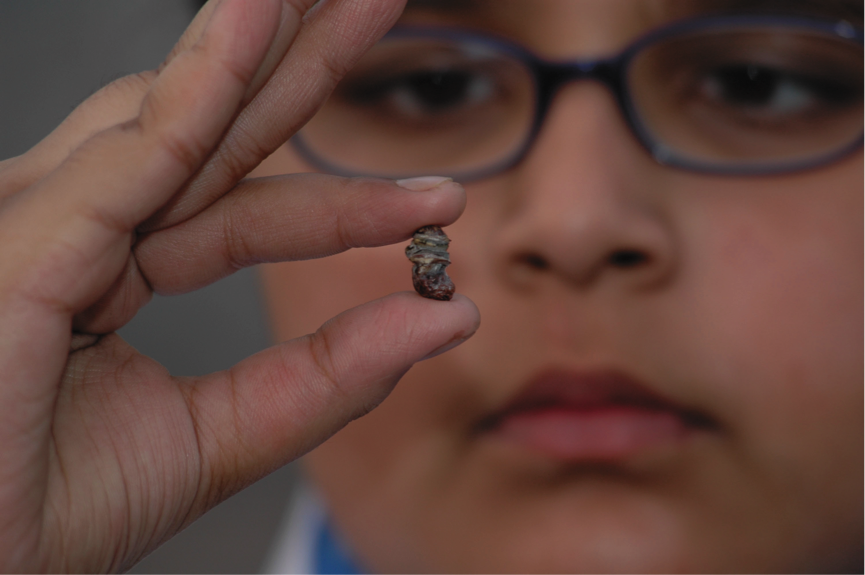
The umbilical cord, or part of it, was often kept when dried. Here a girl examines her own cord, kept carefully by her parents.
In Himachal Pradesh we heard from one dai that the dried cord was kept and put in a young man’s turban when he dressed for his marriage. It is as though the magic of fertility was passed from one generation to the next.
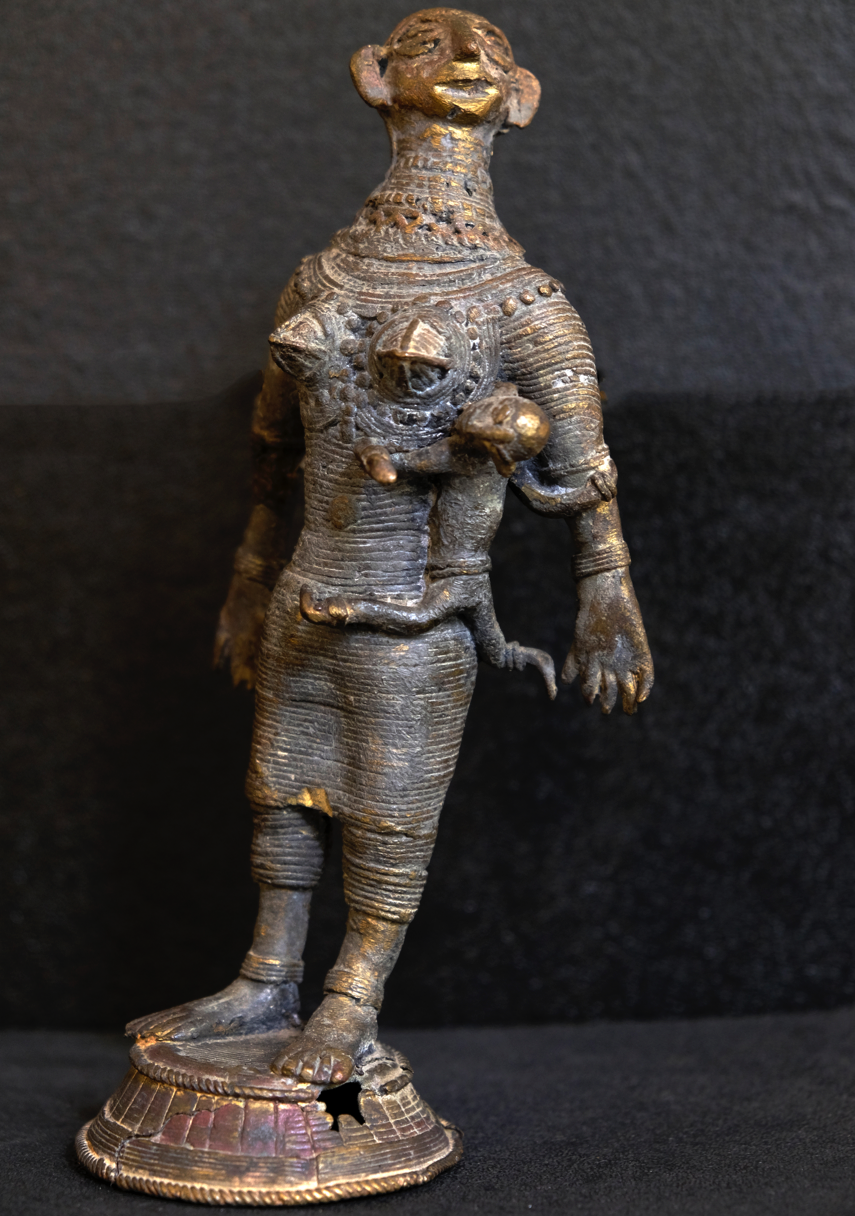
Traditionally, in many places, it was felt that a woman who died in pregnancy, birth or postpartum would become a churel—a spirit who haunted her previous family. It was thought that she was too attached to them and then would return to plague them. Her hands and feet were backwards. This image of a churel, a lost wax figure, shows only her hands on backwards and her baby clinging to her.
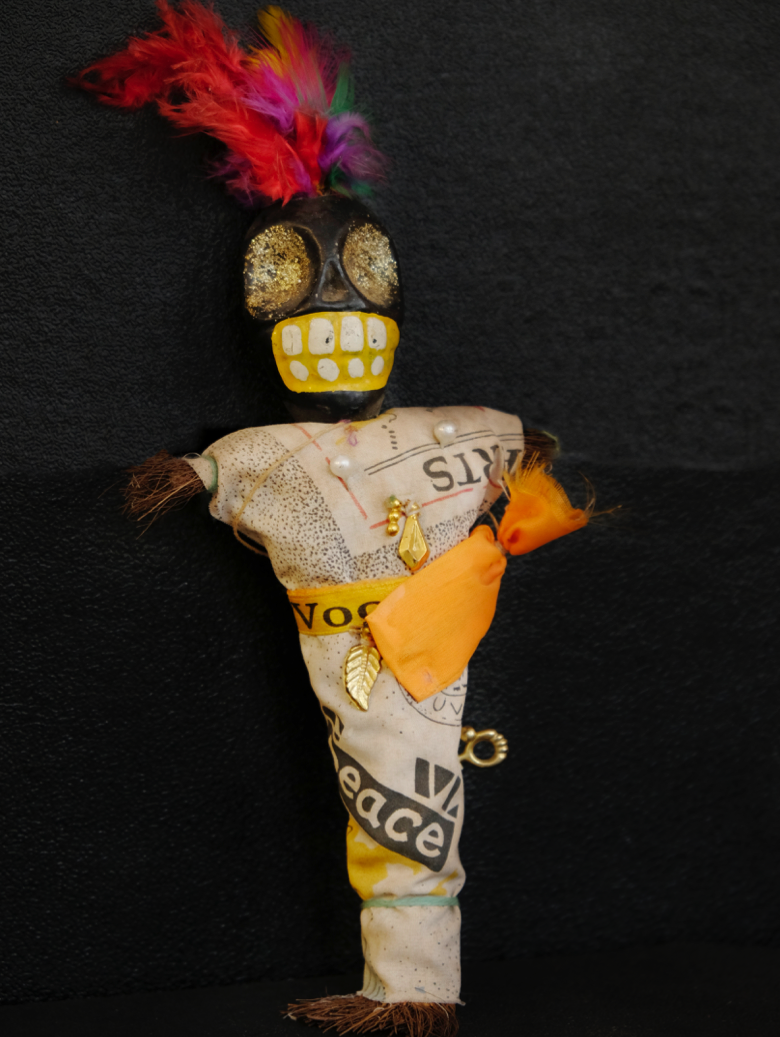
It was commonly thought that postpartum was a time that black magic was performed by bad people—affecting the vulnerable mother and baby.And that bhut, pret (spirit) hauntings might take place. Perhaps today we call it postpartum depression.